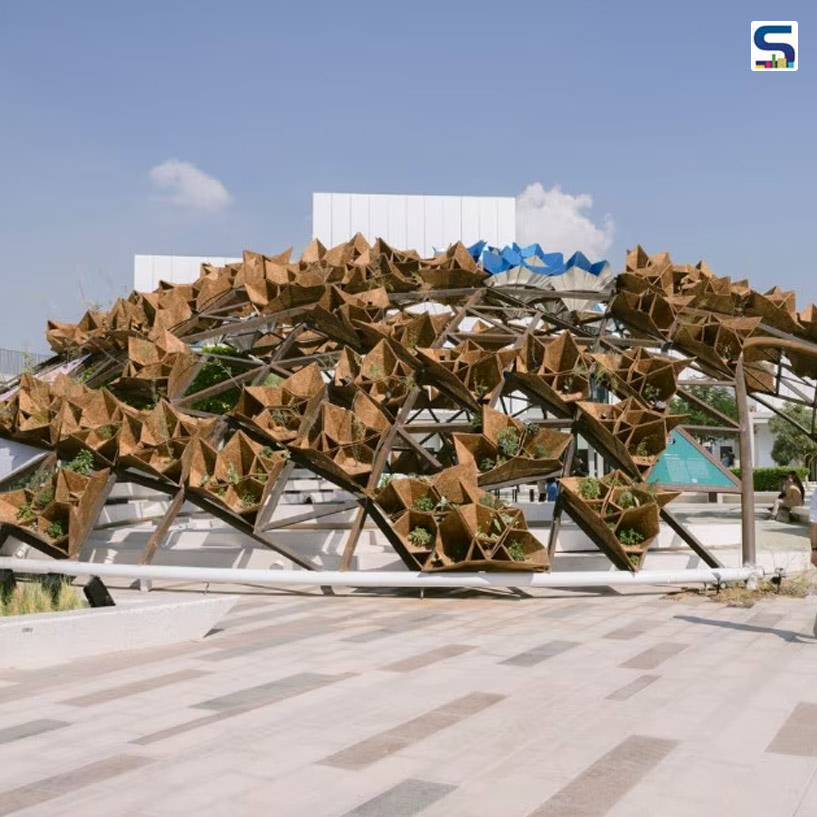
During COP28 in Dubai, Art Jameel, an organization supporting artists and creative communities, introduced an eco-friendly pavilion called Tarabot: Weaving A Living Forum. Architect Adib Dada from theOtherDada studio in Beirut designed this sustainable and immersive structure. It serves as a focal point for broader programming at Jameel Arts Centre in the city. Teh architect used sustainable materials like clay, mycelium, date palm waste, and recycled fabric to build a modular structure that fits well into its surroundings. The Pillars of Sustainability concept guides Tarabot's design, connecting the dome to the ground and roof. Read more info below on SURFACES REPORTER (SR).
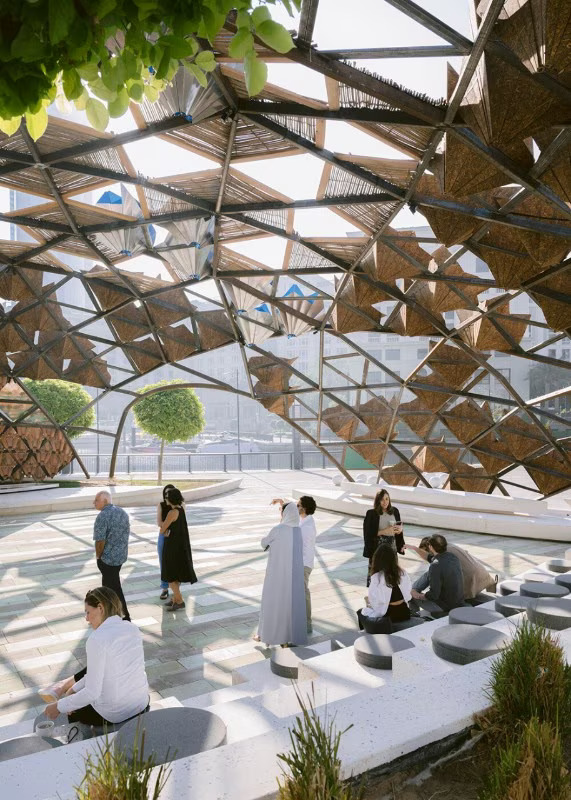 Adib Dada's Tarabot Pavilion goes beyond regular buildings. It's like a special place where two different groups of living things come together and get along. Instead of just being a building, it's a lively space made for people to talk, share ideas, and do community stuff, both during and after the big global conference.
Adib Dada's Tarabot Pavilion goes beyond regular buildings. It's like a special place where two different groups of living things come together and get along. Instead of just being a building, it's a lively space made for people to talk, share ideas, and do community stuff, both during and after the big global conference.
Use of Sustainable and Local Materials
Dada's innovative approach to material selection defines the essence of Tarabot. The modular structure incorporates nested cones crafted from sustainable materials sourced locally.
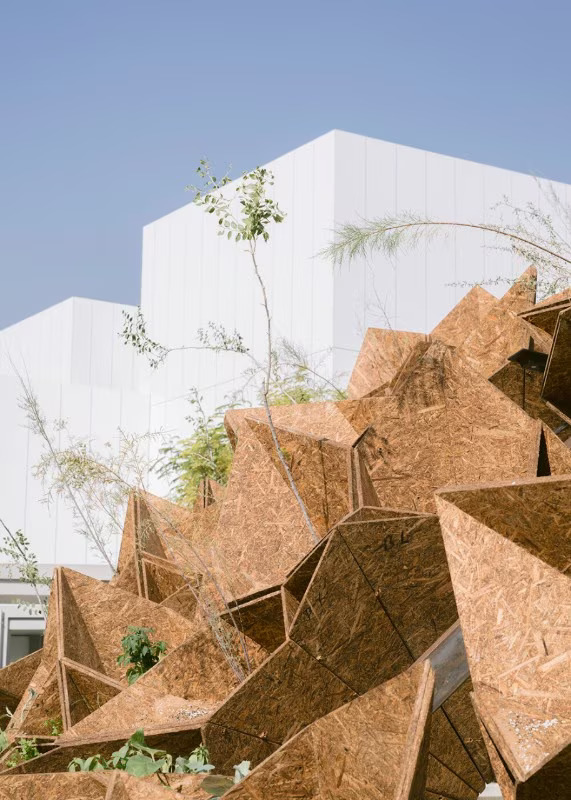 Clay, mycelium, date palm waste, and recycled fabric form the building blocks of this eco-conscious pavilion. Each material serves a purpose beyond construction, contributing to the pavilion's role as a living, breathing entity that coexists harmoniously with its surroundings.
Clay, mycelium, date palm waste, and recycled fabric form the building blocks of this eco-conscious pavilion. Each material serves a purpose beyond construction, contributing to the pavilion's role as a living, breathing entity that coexists harmoniously with its surroundings.
Pillars of Sustainability
Dada envisioned four essential 'pillars'—Soil, Water, Plants, and Energy—for the pavilion, aligning with the dome's connections to the ground and its roof. The Soil pillar transforms waste from the art center, Teible restaurant, and a coffee shop into compost, using modular 'bouquets' made from zero-carbon local date palm waste.
The Water pillar condenses and filters water using solar power, flowing through traditional clay cones into a pool.
The Plants pillar uses compost and fresh water to grow vegetables and indigenous Salicornia, attracting wildlife. Solimar Miller's artwork features prints on upcycled fabrics representing local endangered flora and fauna.
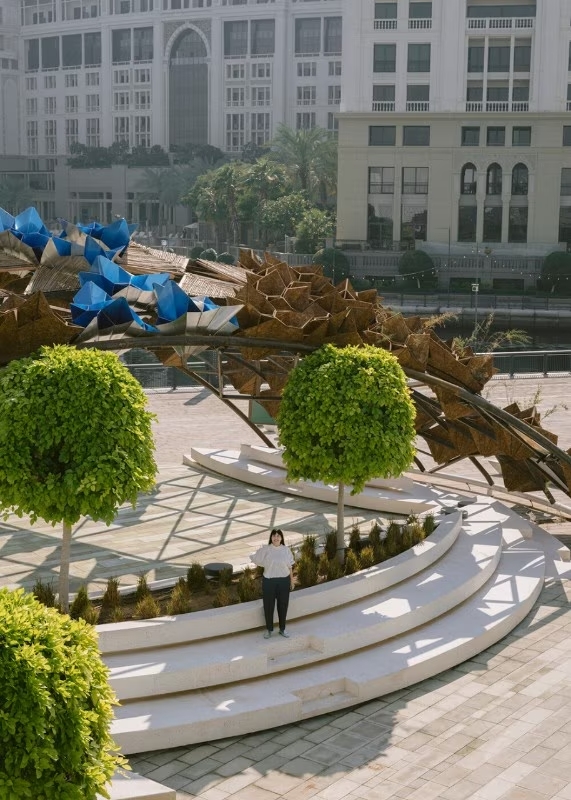 The Energy pillar utilizes solar-concentrating aluminium cones and traditional Arish roofing for shade. Most pavilion materials are biodegradable or recyclable. After dismantling, soil and plants will go to local gardens, while the steel structure becomes an underwater habitat for coral, linking land and sea life.
The Energy pillar utilizes solar-concentrating aluminium cones and traditional Arish roofing for shade. Most pavilion materials are biodegradable or recyclable. After dismantling, soil and plants will go to local gardens, while the steel structure becomes an underwater habitat for coral, linking land and sea life.
From Pavilion to Underwater Habitat
Tarabot is dedicated to being eco-friendly even after it's done with its first job. Once they take it apart, the pieces will be used again to help grow things.
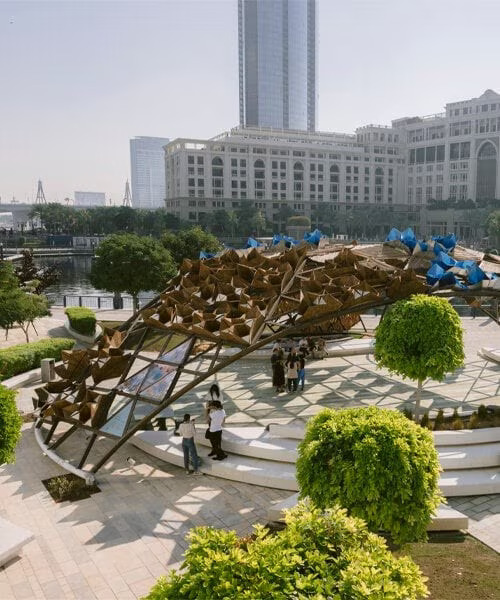 The main part of the pavilion will turn into a home for underwater life like corals and fish, linking what happens on land to what's going on underwater. It's like a continuous connection between the two worlds.
The main part of the pavilion will turn into a home for underwater life like corals and fish, linking what happens on land to what's going on underwater. It's like a continuous connection between the two worlds.
Artistic Interiors
In the Tarabot Pavilion at COP28, artist Solimar Miller from Dubai showcases a series of thought-provoking artworks. These pieces express a powerful response to the fast-paced growth of cities and their impact on the environment. They add an extra layer of meaning to the pavilion's story, making it even more special.
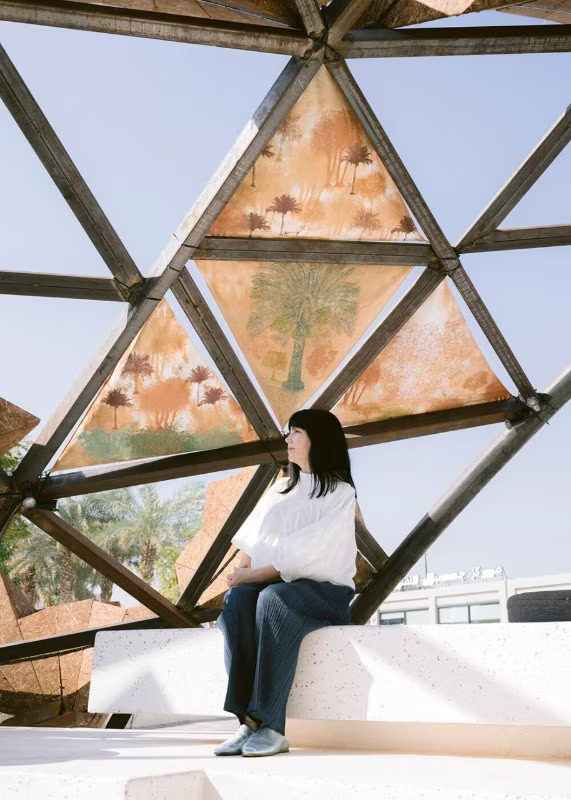 At the heart of this amazing building, the Jameel Arts Centre acts as a center for eco-friendly ideas. The Tarabot Pavilion smoothly becomes part of the center's bigger plans, adding to the ongoing conversation about how art, building design, and caring for the environment all come together.
At the heart of this amazing building, the Jameel Arts Centre acts as a center for eco-friendly ideas. The Tarabot Pavilion smoothly becomes part of the center's bigger plans, adding to the ongoing conversation about how art, building design, and caring for the environment all come together.